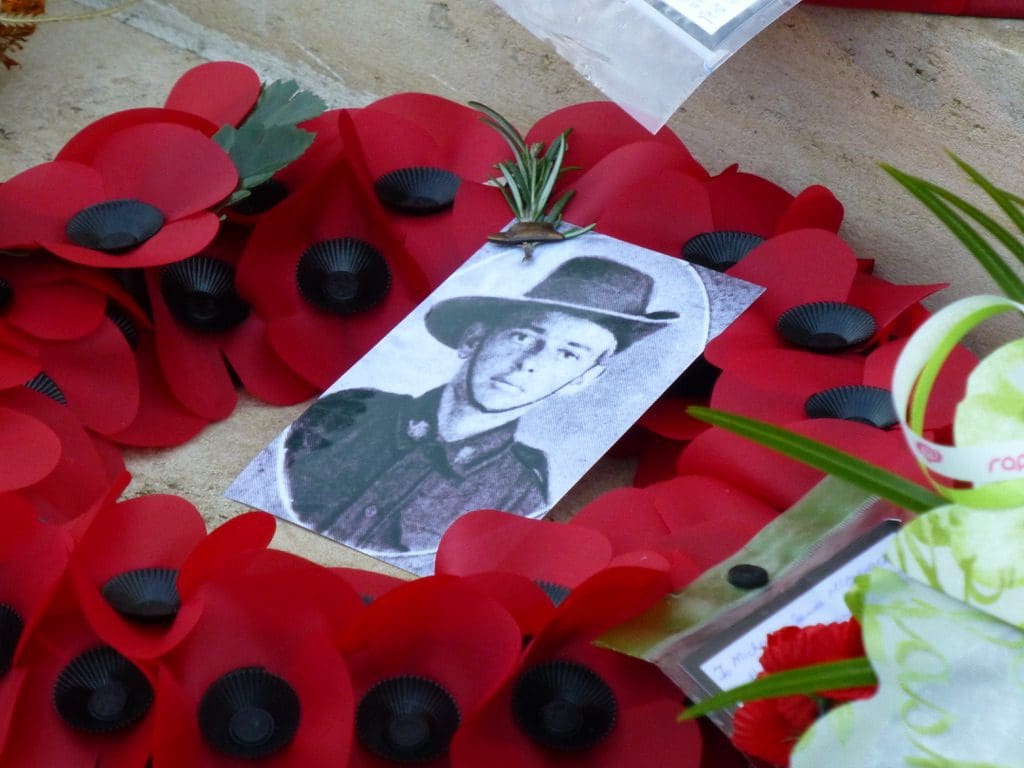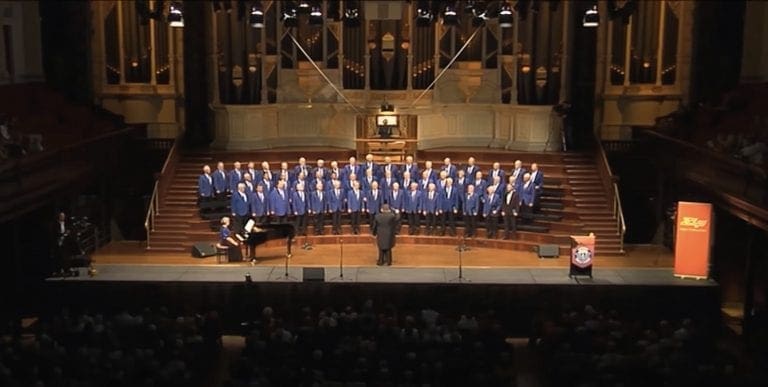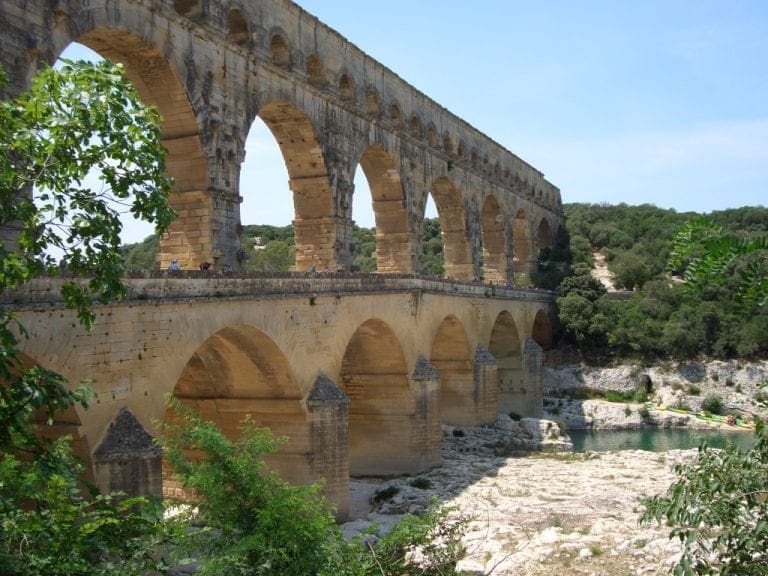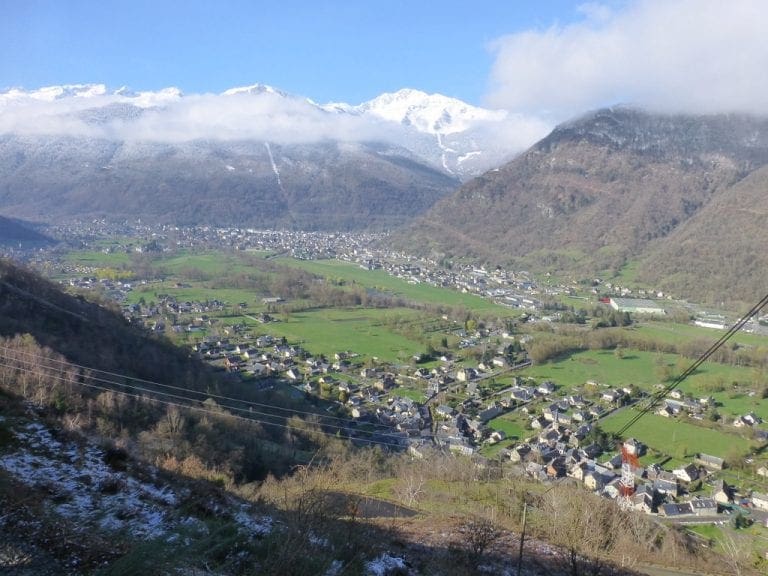France 2013 – week 12 – Somme
19 Apr 2013. Friday. Day 77. Showers and a bit cool at 10C. A biggish day. We were up early for our departure at 8am. We drove, mainly along tollway autoroutes (€14.60) to Paris. We came in from the south with the traffic becoming gradually heavier until we crossed the Perfique (the ring road around Paris) when the traffic merged from 5 lanes into 2. Our hotel (Virgina) is just a couple of streets inside the Perfique. I’ve driven into Paris!! Woo hoo! I parked the car in a bus zone with the warning lights flashing while we booked in an unloaded. ‘Don’t worry, sir, the buses are used to it.’ We had booked and paid for parking with the room, so I was shown where the parking was (‘Through that green gate and down. Walk out the same way as you drive in. The stairs are a maze, and people get lost.’ Good advice – except the car park was in pitch darkness. I got the final things out of the car by feel, edged my way by memory up ramps and back out to a waiting Helen. ‘You were a long time.’ A very quick change of clothes into choir costume and we caught the Metro (100m away) into La Madeleine where the concert was. We were there in plenty of time. (For some reason, I had in my head that the call was at noon when it was actually at 2:30.) We had lunch at a nearby cafe and watched the world go by. Many more tourists. The trees have begun to get green leaves. This season’s colour that we saw in the stores 10 weeks ago when the sales finished – the new colour for the year – a salmony red – is now being worn. How do Americans get to be so rude? Do they study rudeness? A party of Americans sat in chairs next to us, ordered, then walked out for no reason that I could see.
The concert in La Madeleine. For many of us this was a very big deal. La Madeleine is a very famous church and Faure (who wrote quite number of famous pieces of music- eg, Requiem) was the organist here. The choir gathered and rehearsed at 2:45 and performed at 4. Many concerts that we do are difficult. Concerts in big, echoey places (like old churches and cathedrals) can be very difficult. La Madeleine was extremely difficult. I think the most difficult concert I have done. We did OK, though I was disappointed.
I think the organ is seriously out of tune and it hangs onto the occasional note (called ‘a bleeder’). Fortunately, in a way, we could not hear the organ much at all as there was a large statue between us and the organ. I could hear the blokes behind me in my part, but no other part – though that is fairly normal. I think we did ok, but we did mess up our most difficult piece ‘O Magnum Mysterium’. The first tenors got so far out of time and tune that we had to pack it in about 80% through. Although I’ve been practicing every day and thought I had all the music in hand, because of changes in the program, there were four pieces that I have not been rehearsing, two that I have not sung for over a year. I just love that part of singing! All prepared – rehearsed to death – the organ does not work, the hall is a horrid echo chamber and 4 new songs on the day. And the audience thought it was terrific. I love this choir singing caper. What ho, Jeeves.
Sydney Male Choir has about 140 songs in the ‘current repertoire’. About 85-90 of those will be the songs we are singing. We should know those by heart and be prepared to sing them at any time, at any concert. We sing from memory and do not hold music when we sing. With our current Musical Director (Dr Houston Dunleavy), we get several week’s notice of what we will sing at any concert. The previous musical director Alan Thrift would decide one the day on the podium. It was a nightmare for new members.
While we were getting ourselves accustomed to the church, Helen went for a walk to Place de Concord – that huge, horrific round-about in central Paris. Picture this, a very well dressed young woman on a push bike, high heels, ear-buds in her ears, texting with one hand – rode through and around the traffic hurtling around the round-about. Who would be anxious about the traffic in Paris? ‘Look, mum, no hands.’ Also, people lined up to buy the ‘correct’ kind of Macaroons.
20 Apr 2013. Saturday. Day 78. Sunny but not too warm 11C with a light unpleasantly cold wind. Exiting Paris was not as easy as arriving. I got out of the car park ok and reversed up the oneway street pausing for buses. No problem there. Onto the dreaded Perfique ok. However, the girl caught us with one of her ‘take the next exit’ statements. Which would be correct if you did not actually count the ‘next’ exit and took what was really the second exit. (She usually did this trick on roundabouts – take the second exit when it was really the third exit.)
We turned about 100m early and landed in a maze of back streets and so took an extra hour to get out of the Paris chaos and drive to Aubigny/Corbie (small towns just east of Amiens). Lunch at a pub in Corbie. There was an Australian flag behind the bar and I identified myself as Australian. The barman said “what is the word for ‘yesterday’? Yesterday we had Australian footballers.” And shrugged. We are in the one Gite at Aubigny. A lovely old house (probably built immediately after the war. This entire area was leveled between 1914-18.) Australian flags hanging out of windows and the local newspaper has the headline ‘beware, the Australians are coming’.

21 Apr 2013. Sunday. Day 79. Sunny and warm 19C. After lunch, we did a battlefield tour of our own. We looked at major monuments for the two big Somme battles. What a lot of men killed and lives wasted for nothing! We began at the Villers-Bretonneux Australian Memorial (for a bit of recce) to see lines taped out and the RSM pacing out the steps. The site of the Australian Memorial at Villers-Bretonneux was the turning point of WWI – where Australian forces halted the huge German push of early 1918. The Australians were initially driven from the position but took it back in a counterattack.
The 300m or so from the road (where the Australian line was) up the slight ridge to the German position (where the Australian Memorial is) was extremely fiercely fought over. The French think they would be speaking German today if it were not for the Australians stopping that advance just 16km short of Amiens – Germany’s major target. On 8 Aug 1918, Australian forces under Monash (that forgotten man), copied the German advancing method and in 3 weeks pushed 25km through to Mont St Quentin – which completely breached the German lines and gave access to the Hindenburg Line.
The Australians were then pulled out rested and that was their last battle. They had done it. The Germans went to the peace talks. We drove the 25 km to this famous ‘Mont’ that I had read so much about with battle plans and lines on maps. It is a very little hill, a little rise overlooking the Somme. Thousands of Australians were killed or wounded attacking that German stronghold!
We then decided to look at the Memorials of the first Somme battle 1916. We drove the few kilometres to Poiziers to see the First Division Memorial, Mouquet (Moo Cow) Farm and the Windmill Memorials. That 1st Division was mauled!! I was quite shocked to see just how close these battles were to each other – in a triangle with sides of about 500m. So many thousands of men killed and wounded to gain a few metres of ground. And why!
It is also interesting to think that all these houses and building we drove past are less than 100 years old. These towns, villages and farms were all leveled. Not one building standing. Where did the occupants go? Refugees? (Not to Australia. We would have locked them up! Don’t you just love the second verse of our national anthem ‘for those who come from across the seas, you get no welcome here’) How were land titles reestablished when it was over? They would have had to re-survey it. Put back roads, property boundaries, village squares, churches. Farmers still find ordinance every time they plow. There are roadside dumps where old bits of ordinance can be placed for collection. The warning is ‘don’t pick up old grenades from the fields, they might go off!’.
22 Apr 2013. Monday. Day 80. Cloudy with a wind 12C. A rehearsal for all the choirs and bands for tonight’s concert for the village of Villers-Bretonneux. Very good to sing with the lads again. The hall we are to sing in is the village’s covered market which is very sympathetic to bass voices but eats sopranos and tenors. Our first sing with the band had me laughing. We began with ‘Two Little Boys’. The entry for the choir is marked as pianissimo with many volume and tempo changes to achieve a haunting kind of emotion. The band played at what I would call a strong forte and constant speed throughout – every beat emphasised by cymbals crashing. Much effort was taken to get the drummer from setting his own agenda. We sounded pretty good. I hope it goes ok tonight for the citizens of Villers-Bretonneux. The village is full of Oz flags and green and gold bunting.
The concert went very well. I think about 4-500 people in the audience – mainly from the village and surrounding area. With the four groups – band, pipe band, school choir and male choir – we might have gone on a bit long, but it was clear even from the applause and three standing ovations (after the clarinet solo from the band, after our ‘When the Saints’ and at the end) that we did well. The school band was extremely impressive and the pipe band very good. The hall ate the young voices of the school choir – but good for them, they are impressive anyway. I took a few decibel readings – pipe band 99, school band 95 (to 100 on a big drum roll), Sydney Male Choir singing fortissimo 102. Speeches at the beginning to say ‘In our village, Australian troops stopped and turned back the German advance into France. We owe Australia.’
Our first song was La Marseilles. The French sprang to their feet. The Australians in the audience (who were mainly in the front) noticed Frenchmen standing behind them and straggled to their feet too. Everyone sat down. The next number was ‘Advance Australian Fair’. The Australians (who normally might not do so) straggled to their feet again (maybe a little in awe of French nationalism), so the French straggled to their feet too. Everyone down again for ‘Two Little Boys’.
23 Apr 2013. Tuesday. Day 81. The first of several long days. Cloudy and cold early and sunny and warm by mid afternoon. Helen and I had a morning off to recover our waa while the choir did a battlefield tour. We had an explore of parking at Amiens (where we will have to park for ANZAC Day) and had a nice lunch by the Somme River at Amiens.
Then, back to Villers-Bretonneux for a ‘sound check, run through’ with Department of Veterans Affairs DVA from 3 to 4:30. The woman in charge of that is extremely thorough.
From there to Vignacourt to visit a recently established photographic exhibition. Train lines ran to Vignacourt which was just behind the British front lines. It was therefore a major drop-off place that most of the British Army passed through on their way to the front. It was also the first major triage stop for wounded evacuees. It was never bombed or shelled. It is described as a very happy place in the midst of the hell of war. The lady who ran a cafe in the village had a camera and took thousands of photos – an extremely important record that has been recently put on the public record. Very interesting and I really hope they can make something of the museum. I certainly would have bought a book if there was one available.
From there to rehearsal in the Vignacourt church. We sounded very good. That church suits us very much. From there to diner put on for us at the local hall by the local community. Extremely friendly, welcoming and outgoing people.
Then to the concert itself. Their local School of Music orchestra/band played 8 pieces. A lot better than I would expect from a small community like this. We put on a show for about an hour. They gave us two standing ovations and would have liked more. The first time I have walked out through lines of audience who stood and applauded us down the aisle. We done good. That church is close to perfect for us to sing in – good for basses and tenors.
One highlight for me was the young fellow who sat in the pews just in front of us while the local band was setting up. A few minutes later a woman came up, grabbed him by the ear and said (in whispered French pointing with her other hand) ‘ Johnny Brown! Get down there.!’ It turned out he was the drummer. We next saw him bopping along on the drum kit. Another was the line of teenagers that slid along a pew – cramming more and more on until the girl on the end was crammed in behind a pillar. What good high spirits!
24 Apr 2013. Wednesday. Day 82. Warm sunny 23C when the sun got to us. The call this morning was to be at the Villers-Bretonneux Australian War Memorial at 7:30am. Alarm at 6:30am and we were there (by ourselves) at 7:30am. The DVA straggled in 15 minutes later and the choir buses at 8am. The rehearsals went for 7 hours. But this ‘dress’ rehearsal was not about us. The day was mainly for the DVA to get their timing worked out – to the last second; for the TV people to get their cameras all working and to know where the best shots were to be found. We were just necessary props.
Before the sun got to us at about 11am, it was cold. Then, it heated up and all the coats came off as we roasted and the sun umbrellas went up. I read my kindle. It was actually interesting to watch the various bits getting worked out. The catafalque party went through its paces (real paces) at least 10 times. The drummer of that party played ‘air-drum’ all the time he was not actually drumming. By the last time through they had gradually moved from tee-shirts to tee-shirts with shiny bayonets to full uniform with very shiny boots. Lunch was provided. They closed all the roads in the area at 2pm.
Helen snuck in just before they closed roads and she watched from the back row. She could not hear the choir at all. We were swamped by the DVA soloist. On the TV broadcast of last year’s event, we could not see or hear the coir at all. Being here is the important thing.
25 Apr 2013. Thursday. Day 83. Eventually an almost cloudless sky 26C. A very early call for us. We had to meet the bus at Amiens at 2:30am. We went to bed at 6pm yesterday with two alarms set for 12:45am. A bit fuzzy headed when we joined the bus which delivered us to the Australian Memorial Villers-Bretonneux for the ANZAC Day ceremony.
The DVA had provided us a tent and breakfast (if we wanted it). They wanted us there at this very early hour because from 3:30am the road is clogged with buses delivering load after load after load of people to see the service. Plus the hundreds who walked in from parking at nearby villages. We had to be seated formally in our chairs at 4:40am to do whatever pre-service singing they wanted – not much.
The service (which was streamed live to Australian TV) began at 5:30am and was finished about an hour later. I have to report that sitting in the one spot pre-dawn at 5C is cold. I had on three coats and thermal top and bottoms, woollen pants and eventually gloves. Just before the service began, the temperature dropped further and a ground mist swirled in.
All very fuzzy and dream-like after the early start. I have no idea how many attended. More people than seats because a huge number were standing.
The choir was very poorly lit and we could hardly see our program – with the words to the hymns that we were to sing.
We sang our stuff and caught our bus out at 7:30am. (We were one of the first buses out.) (There were a few thousand lined up to catch buses. A voice of authority said ‘hands up all those on bus 4’. At least a thousand hands went up.) And headed back to Amiens. Most of the official party, bands and school choir went to Villers-Bretonneux for the town service. Sydney Male Choir, on seeing how much we had to do today, had wisely opted us out of that service. Helen and I headed back to our house at Aubigny for a couple of hours sleep before the next call. We had to be at Bullecourt (1 hour north) by 1:30pm for two ceremonies.
By then, it was warming up. Thankfully, I had shed all the outer coats and thermals. The first ceremony at Bullecourt was in the village centre and was a combined French and Australian ceremony to mark how well we like each other and get on so well. It dragged a little and the school kids (who had not eaten or shed their heavy coats) began to drop like flies.
The teachers ran around and got the coats off them, gave out water, provided umbrellas. The trouble is that when one drops, the rest catch it and begin to wobble too. (The real problem was that they had been up since 12:30am, had little sleep and no breakfast or lunch. The breakfast would have looked very good to French eyes – tasty ham, cheese, bread, pasta. The Australian, especially the school girls, went yuk – ‘where is the cornflakes?’) The wreath laying – because wreaths had to be laid on both of two memorials on opposite sides of the road – dragged on and on and on. When the local French flag carriers began to drop, the ceremony was shortened. We then marched (well straggled) along the road behind the French banner and flag contingent to a ceremony at the ‘Digger’ Memorial. And this was the highlight of the day for me – we sang as we marched/walked ‘Tipperary’, ‘Waltzing Matilda’, ‘Daisy’ etc. A few more kids passed out along the way, a few more when we got there and a few more Frenchmen. By now, the organisers had realised we were in strife and had us stand in the shade and did their best to cut things short. I have to say that the response by the Australian officials was extremely good. It was the unexpected heat that did it. That, and young girls who did not eat and got too hot in big coats. Youth! (However, that is saying that the post hoc response was good. DVA needs to have a really good think about how to manage the ‘people’ as well as the event. Ie, they have the event worked out with timings and event managers. However, they probably need to appoint a ‘personnel manager’ to make certain everyone gets home ok.)
By the time we had left Bullecourt, I would say we were pretty well ‘serviced out’. In the last two days, I been through the ANZAC Dawn Service 7 times. What did we sing? A couple of hymns and a couple or three anthems. Very minor role for us. Just a necessary prop. An early night for us tonight. We move on with the choir tomorrow and then we are out.
What have I thought of our week at Aubigny (a tiny village without a bread shop 3 kms north of Villers-Bretonneux)? I like the house – clean and basic two bedrooms and a biggish living room. It is very convenient to the Australian Somme Memorials and is an ideal base for Australians visiting the Somme. I like the village – which has mainly two type of houses: farm houses with huge pieces of equipment in the yard; and houses for the workers at the huge Nestle Danone factory at the western edge of the village.
26 Apr 2013. Friday. Day 84. The day began with misting rain and then the wind kicked in 8C. At times and in places the rain was heavy – usually just cold. This day will be a number of parts. First, we packed the car and said goodbye to our very nice landlady who we have seen exactly twice. Stopped at the Aubigny war cemetery (which I have been driving past for the last week). It has 85 Australian headstones and is tucked away on the edge of the village. In the past 2 days, this tiny cemetery has had 5 Australian parties that have signed the visitors book and left flowers.
That is a bit of an indication of the huge numbers of Australians who are making this pilgrimage.
Second, up the autoroute tollway to Fromelles ( 1 1/2 hours north). Fromelles was the site of possibly the biggest loss of life of Australians on WWI. It was the first action of the Australian 5th Division. They were inexperienced and sent in to ‘divert’ the Germans from the Somme. 5,533 were killed, 3,146 were wounded. At one point 2,000 bodies could be seen in no-mans-land. Wounded were brought in with much difficulty but dead bodies were stripped of id tags (to be sent home) and left. These now unidentifiable bodies were buried in mass graves. After then, policy changed and each dead soldier was buried in a clearly identifiable grave. Recently, 2009? about 900 were found in mass-graves near Fromelles and re-interred after attempted DNA matching. They are now in donated ground at ‘Pheasants Wood’ on the outskirts of Fromelles.
A bit further south of Fromelles are the two main Australian memorials – Cobbers and VC Corner. VC Corner has 406 Australian soldiers in mass-gaves. On the wall of the memorial at VC Corner are the names of those killed at Fromelles.
The 53rd battalion was hit very hard – losing most of its officers (Lieutenant Colonel, Majors, captains, lieutenants) and NCOs plus three boards full of privates – 625 killed. (A battalion has just over 1,000 men.) The 60th battalion lost what looks to be most of its sergeants (the glue of the regiment) and five boards of privates – 757 killed. The 32nd had 718 killed and 59th 695 killed. The 53rd was from NSW. The 59th and 60th from Victoria. The 32nd from SA/WA. What a stupid waste of good men.
We had met up with another choir member travelling by car and tried for lunch. Fromelles has closed all its lunch places – a sure sign of a dying town. We were directed to a nearby village where we had ‘bully beef’ out of a can and chips in a local pub. Kind of fitting we thought.
Third, to Arras where we are in a magnificent old house – our landlady (who looks to be early 40s) converted her house to an hotel as her ‘project’ 20 years ago. She too is a singer (soprano).
Fourth, we were to be at ‘La Conservatoire’ at 5 fully dressed in full kit for rehearsal at 5pm for a concert at 7:30pm. We rehearsed and sang with a local mens choir ‘Polish Miners Choir’. They put about 40 on stage – as did we. They sing very much in the Russian style – plenty of bass – and very harmonious music. We had the second half and entertained them. The difference between the two choirs: they sing beautiful music beautifully and are funded by the State; we sing to entertain and are paid for by our audience. They posted this http://www.youtube.com/watch?v=ZxffQs5XylY
We were then put in buses to go to the very elaborate Town Hall for a function – much Clermont and beer. There were certainly language difficulties – almost none of them spoke English and almost none of us speak French – but we tried hard to talk to each other. A good night. At 11pm, the Polish Miners began a car pool to get our people back to their Hotels. Helen and I walked back – using the maps app on the iPhone. What could go wrong? Nothing actually.
That is the end of my involvement with the choir here. They move on to England and a string of engagements including competitions in Cornwall. We go back to Australia in a few days for Helen’s mum’s 100th birthday.




















